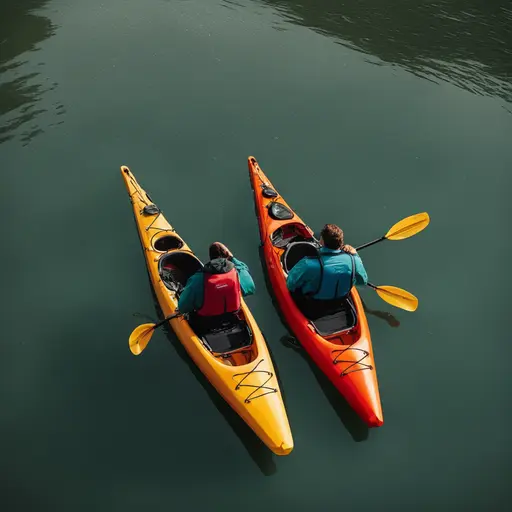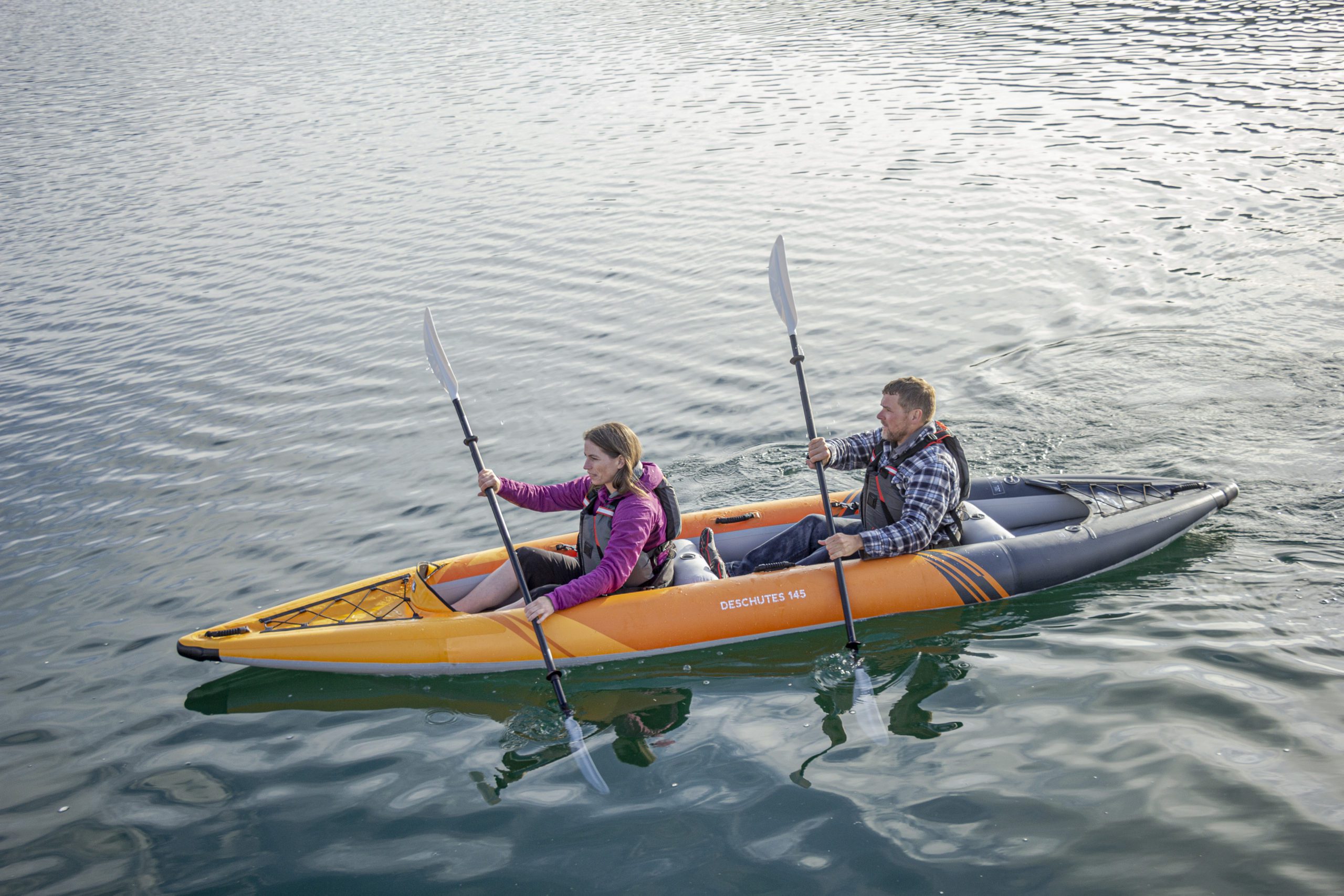In a world where outdoor enthusiasts constantly seek new and exhilarating ways to immerse themselves in nature, water-based activities have surged in popularity. Among these activities, kayaking stands out as a captivating pursuit that allows individuals to forge a connection with bodies of water, explore serene landscapes, and bond with fellow adventurers. One particularly intriguing iteration of kayaking is the tandem kayak. In this article, we delve into the world of tandem kayaks, offering an in-depth guide on what is a Tandem Kayak. We will explore its definition, advantages, considerations, and provide useful tips for a seamless tandem kayaking experience.
What is a Tandem Kayak?

Definition and Concept
A tandem kayak is a specially designed kayak that accommodates two paddlers, allowing them to paddle together as a team. Unlike traditional single-person kayaks, where an individual operates the vessel, tandem kayaks offer a collaborative and shared experience. This watercraft is ideal for couples, friends, family members, or any pair seeking to share their kayaking journey.
Seating Arrangements
Tandem kayaks offer two primary seating arrangements:
- Side-by-Side: In this configuration, both paddlers sit next to each other. This setup facilitates easy communication and interaction between the two kayakers.
- Front-and-Back: In this arrangement, one kayaker occupies the front seat while the other sits in the back. This seating choice can enhance weight distribution, stability, and efficiency in specific situations.
Shared Responsibilities
Tandem kayaking demands harmonious collaboration between both participants. They must synchronize their paddling rhythm, navigate obstacles, and communicate effectively to steer the kayak in the desired direction. One person may focus on steering, while the other maintains a steady pace, or they can alternate roles as needed.
Advantages of Tandem Kayaking
Social Interaction
Tandem kayaking fosters social bonding and teamwork. It provides an excellent opportunity for friends, couples, or family members to partake in an adventure together, creating lasting memories while working in unison.
Enhanced Stability
In comparison to single kayaks, tandem kayaks tend to be broader and more stable due to their larger size and capacity for two individuals. This increased stability makes them an appealing choice for beginners or those who might feel less secure in a single kayak.
Efficient Paddling
When paddling in tandem, kayakers can synchronize their strokes, leading to more efficient propulsion. This synchronization can result in greater speed and reduced fatigue compared to two individuals paddling separately.
Skill Sharing
Tandem kayaking enables paddlers to learn from one another. Experienced kayakers can offer guidance to beginners, helping them develop proper paddling techniques and water navigation skills.
Read More: What is a Skeg on A Kayak?
Considerations Before Tandem Kayaking
Communication
Effective communication is paramount for a successful tandem kayaking experience. Paddlers should establish clear signals and cues for steering, stopping, and changes in direction. Open lines of communication prevent misunderstandings and contribute to a safe journey.
Compatibility
While tandem kayaking can strengthen relationships, it’s essential to consider the compatibility of your paddling partner. Similar fitness levels, goals, and interests will contribute to a more enjoyable adventure.
Coordination
Coordination of movements is critical in a tandem kayak. Paddlers must harmonize their actions to prevent paddle clashes and maintain a straight course. Regular practice can enhance coordination skills.
Weight Distribution
Proper weight distribution is vital to maintaining stability and balance. Paddlers should adjust their positions to evenly distribute their weight, preventing the kayak from tilting.
Tips for an Enjoyable Tandem Kayak Experience
Communication is Key
Establish clear and concise communication with your partner before embarking on your tandem kayaking journey. Agree on signals and calls to ensure smooth coordination.
Paddling Synchronization
Practice paddling in sync. Finding a rhythm that suits both paddlers will maximize efficiency and help maintain a straight course.
Respect Personal Space
Though tandem kayaking requires close proximity, respecting each other’s personal space is crucial. Make adjustments to seating arrangements if needed for comfort.
Enjoy the Journey
Remember that tandem kayaking is not just about reaching a destination; it’s about enjoying the experience together. Absorb the scenery, share stories, and savor the time spent on the water.
Conclusion
Tandem kayaking opens doors to shared adventures and indelible moments. By comprehending the concept, benefits, considerations, and tips associated with tandem kayaking, you can embark on a journey that transcends the physical activity itself. Whether you’re aiming to fortify a relationship, acquire new skills, or merely relish the beauty of nature with a companion, tandem kayaking presents an exhilarating and rewarding avenue to explore waters jointly. So, seize a paddle, find a partner, and set forth on your tandem kayaking escapade.
For additional guidance on kayaking-related topics, such as building a homemade kayak launch, getting into a kayak, and transporting a kayak, refer to these helpful resources:

Hi, I’m Steve, the passionate kayaking enthusiast behind Outdoor Bravo. As an avid adventurer and nature lover, kayaking has been a central part of my life for as long as I can remember. My love affair with the water began during my childhood, and it has only grown stronger over the years. From serene lakes to rushing rivers and even challenging ocean tides, I’ve navigated various water bodies, seeking new thrills and unforgettable experiences.
